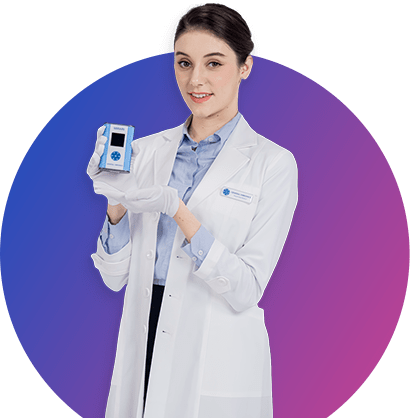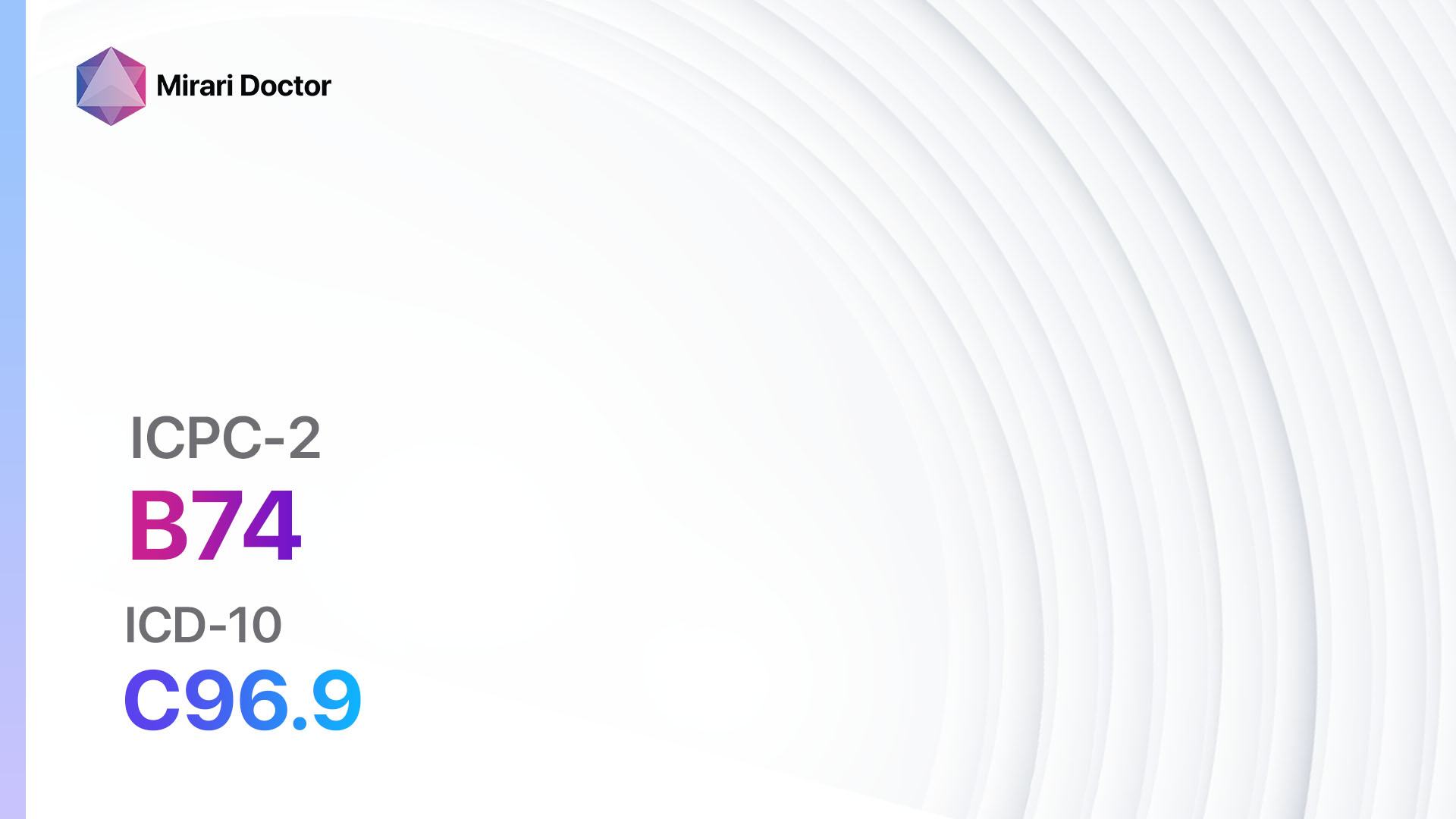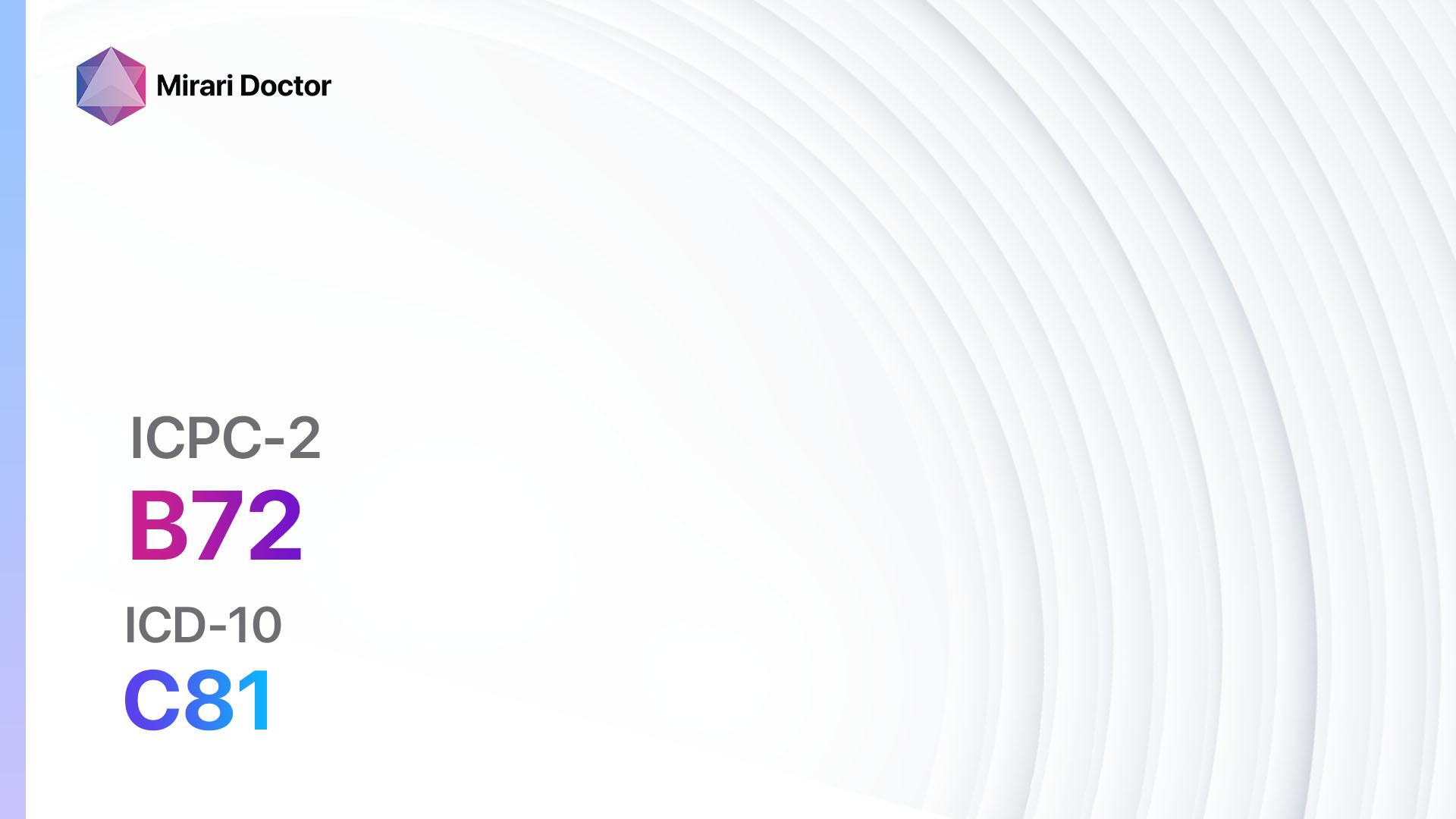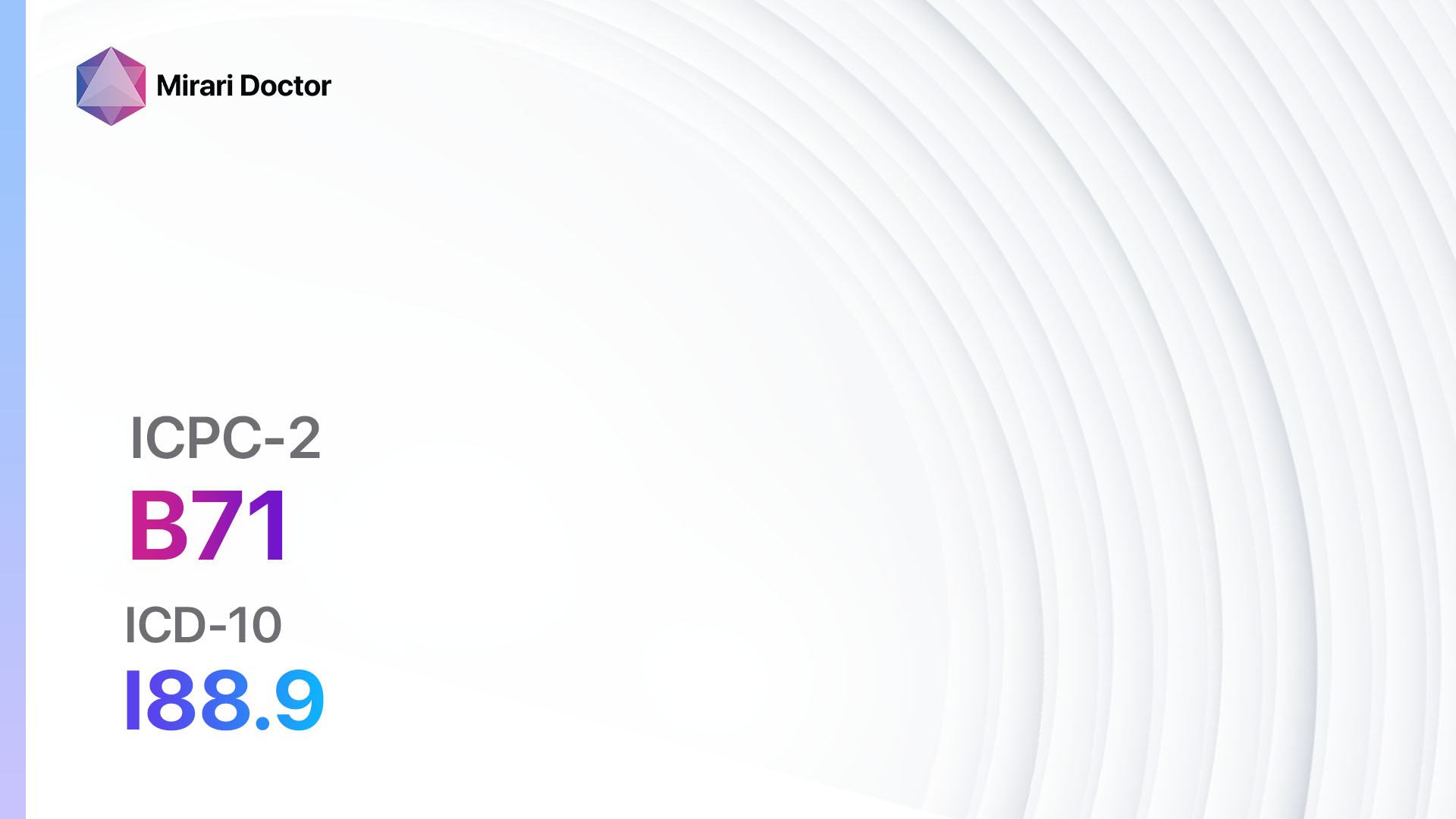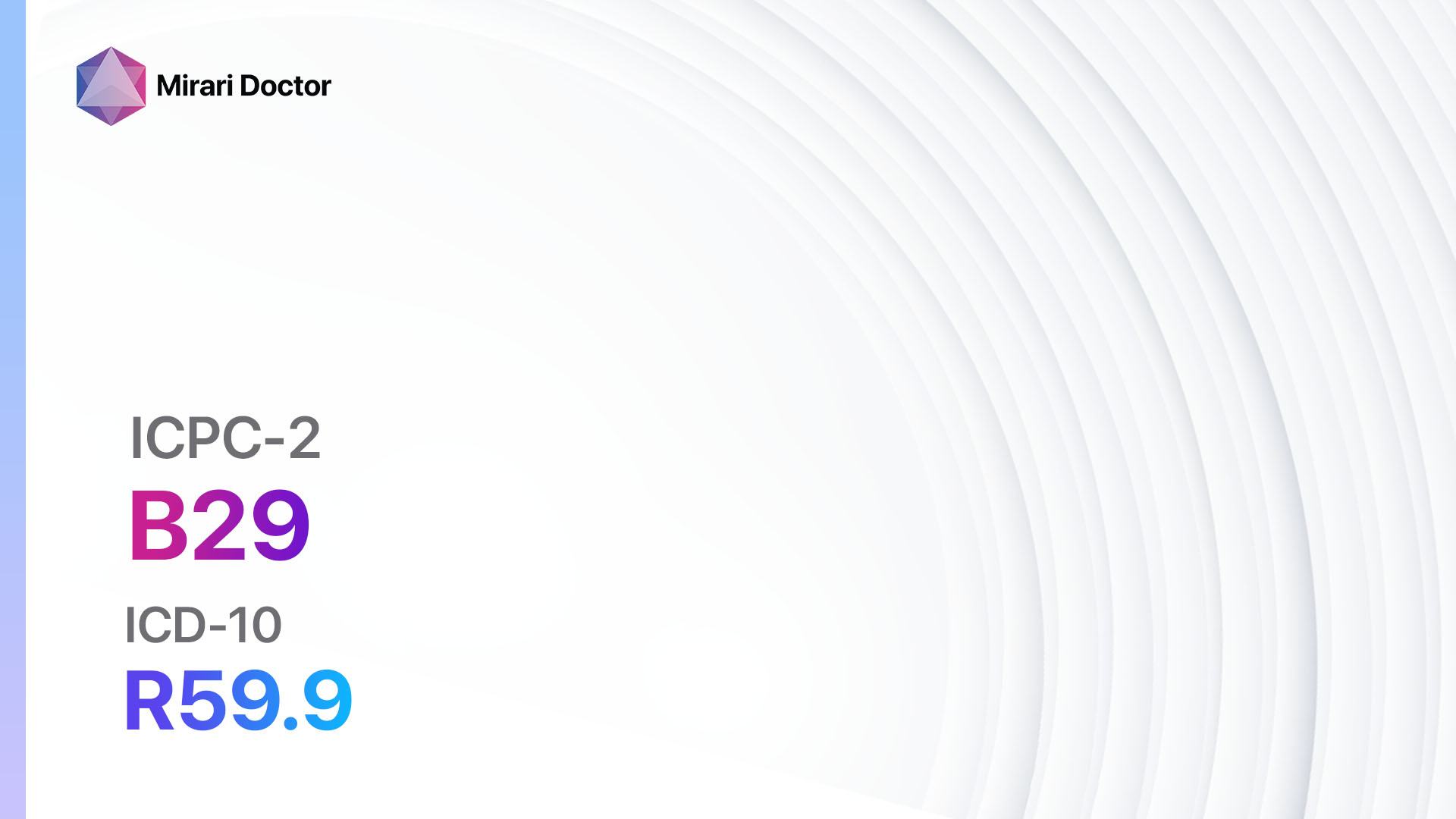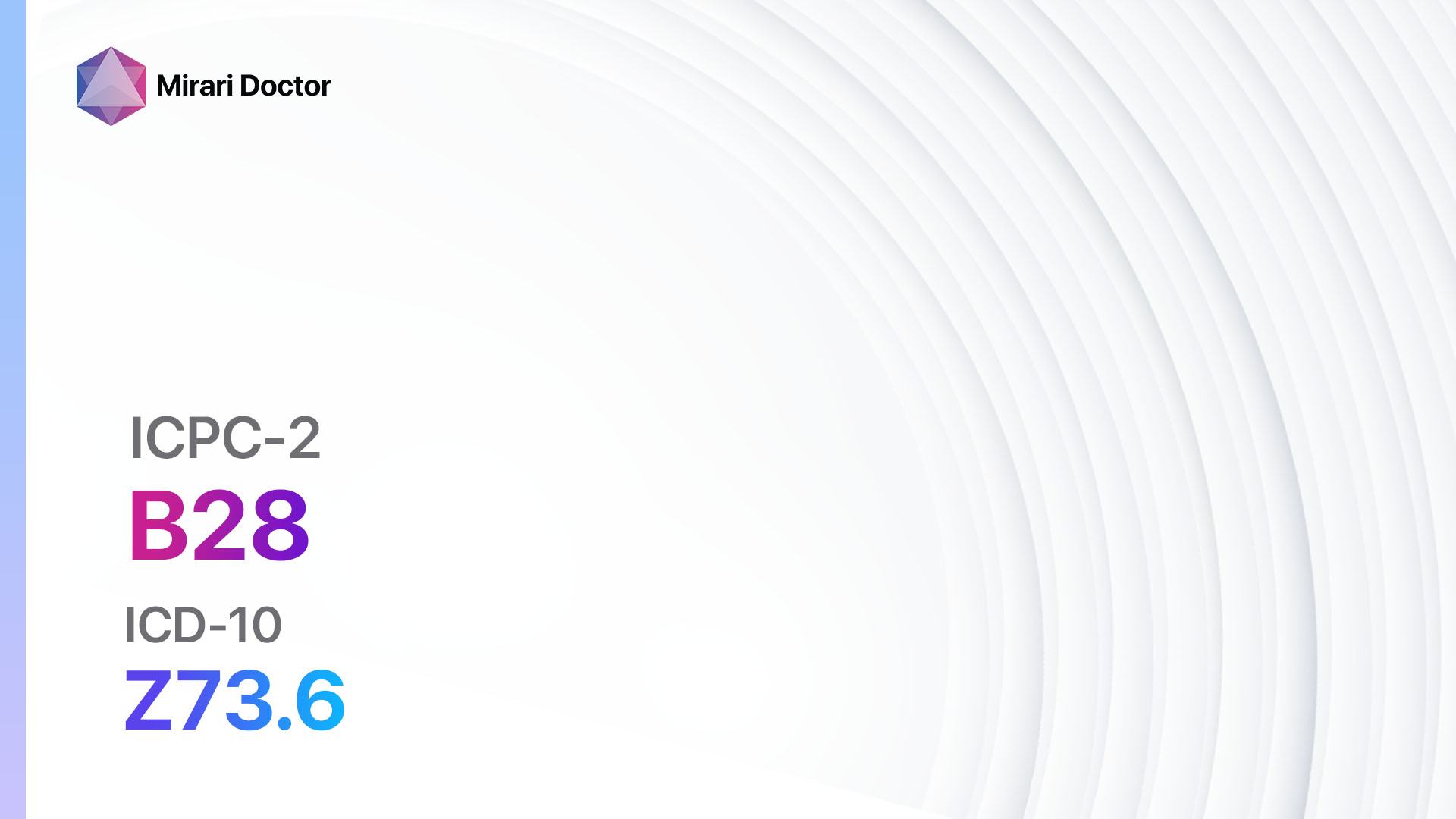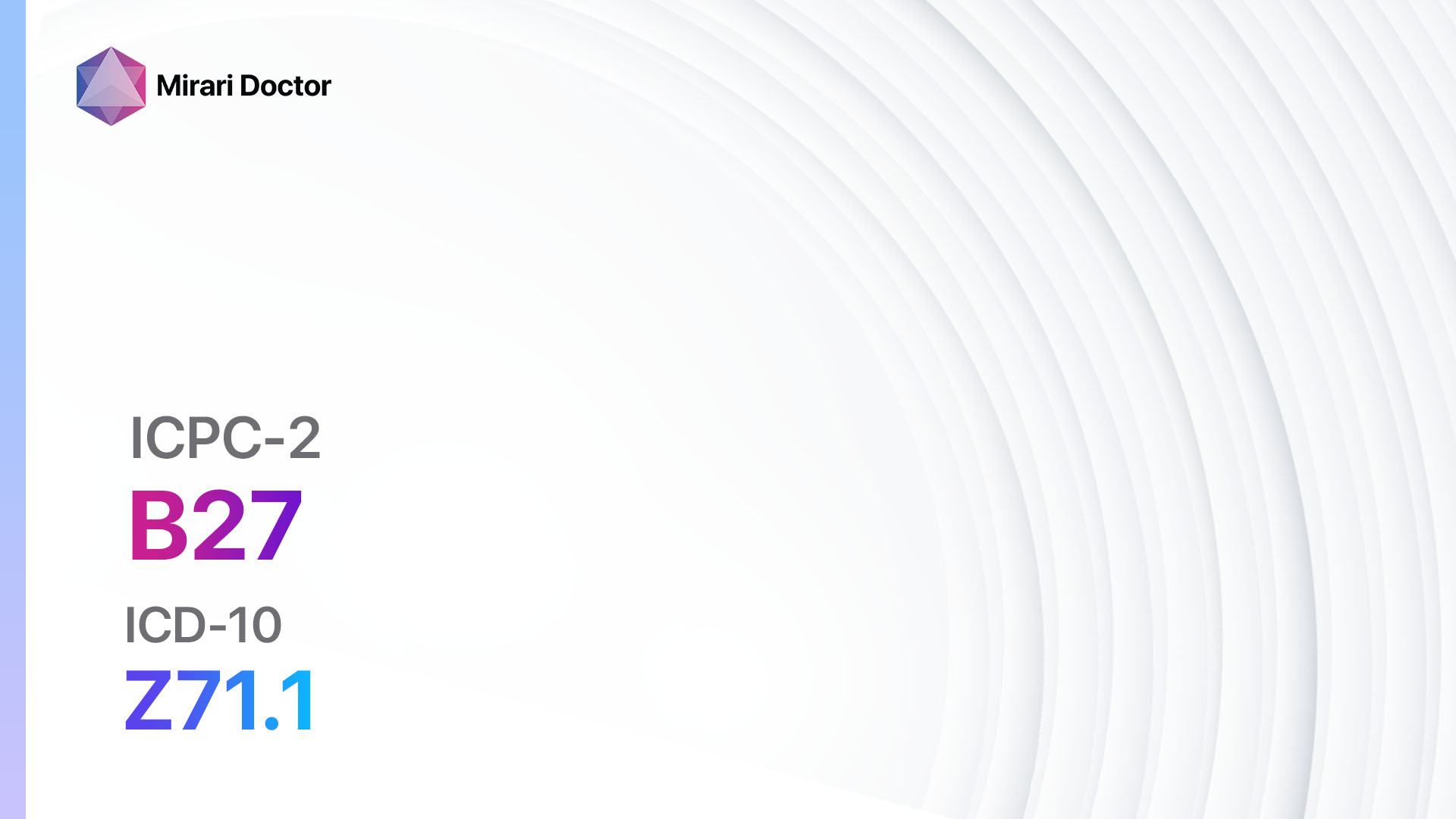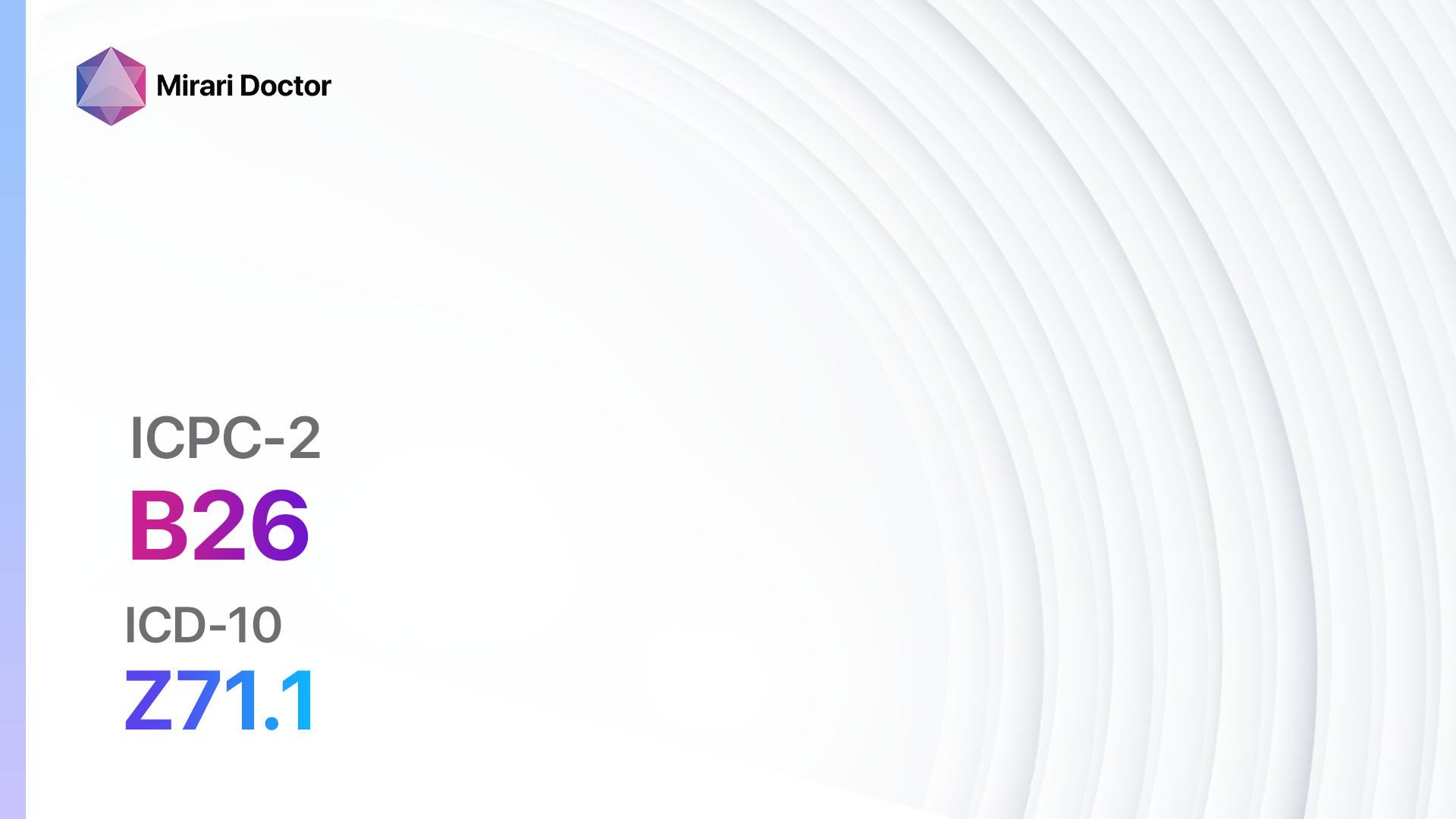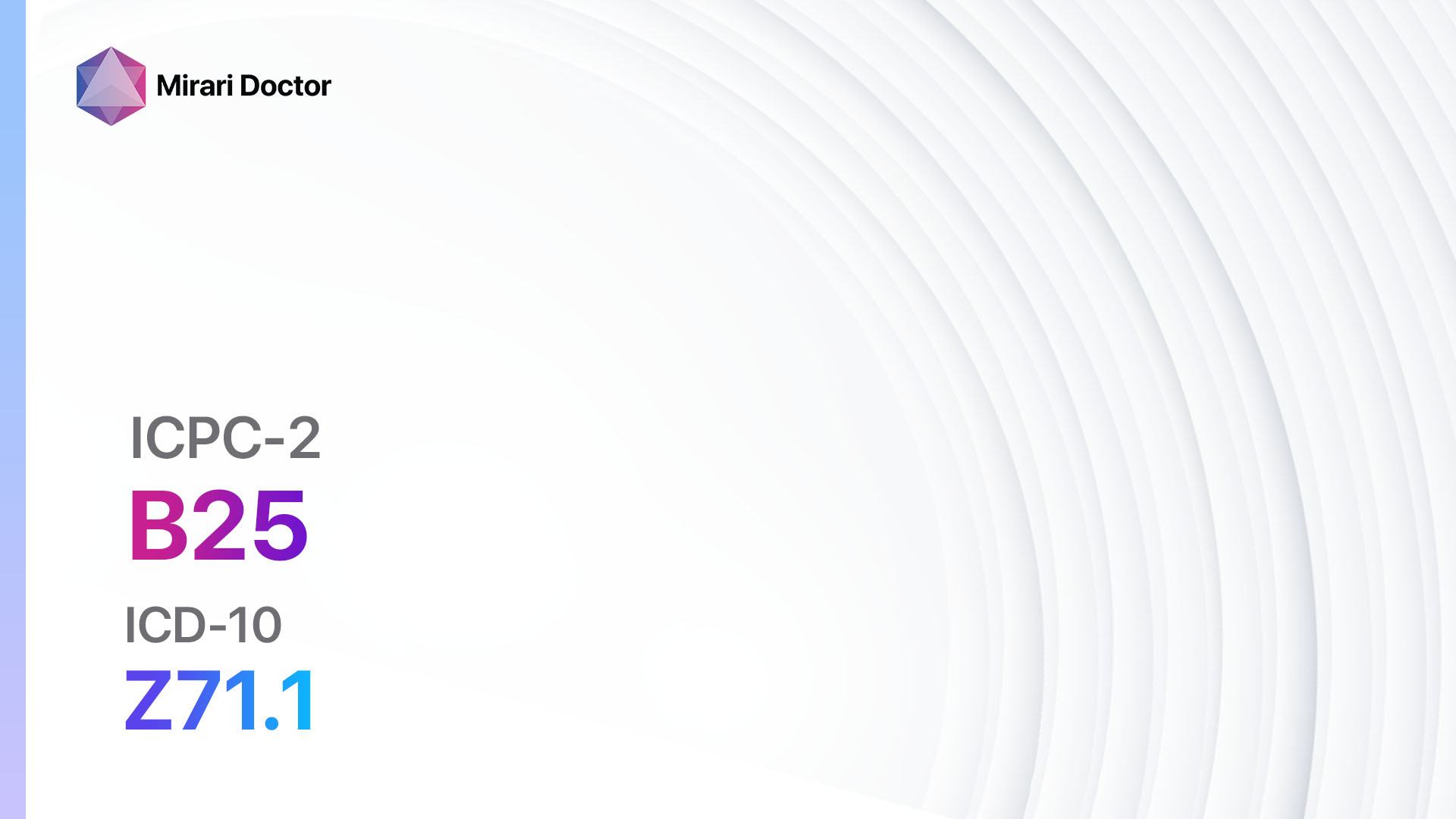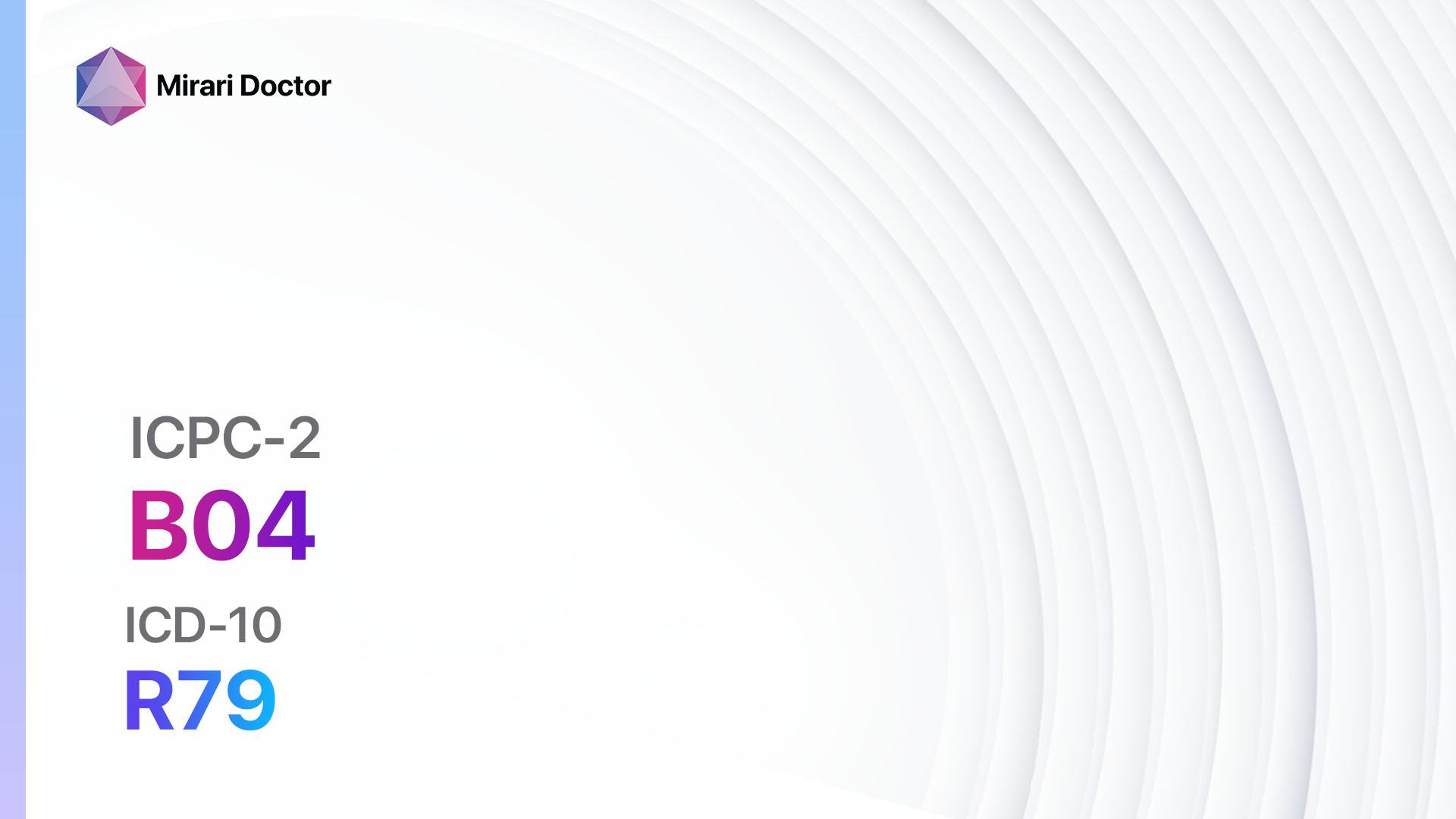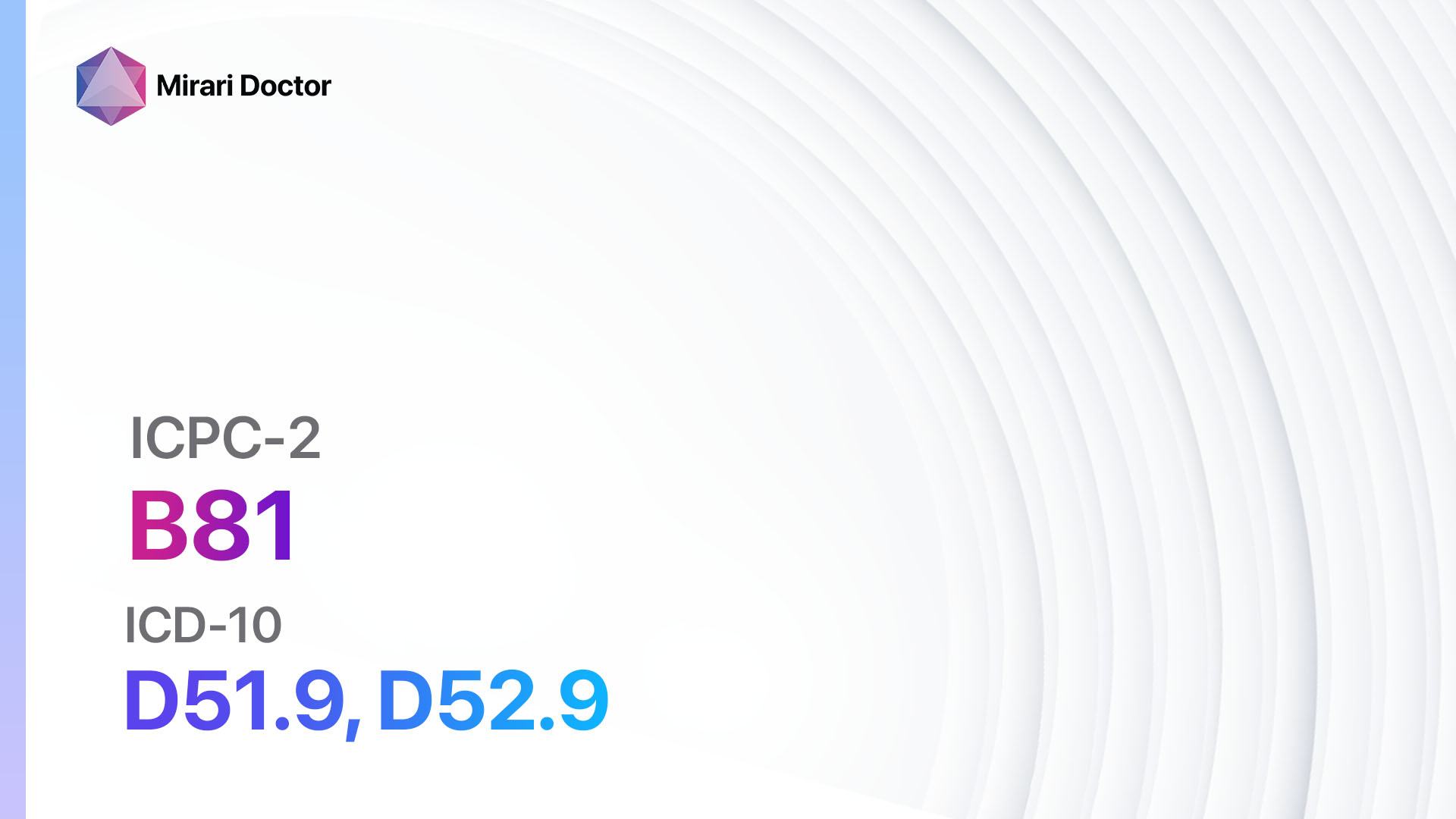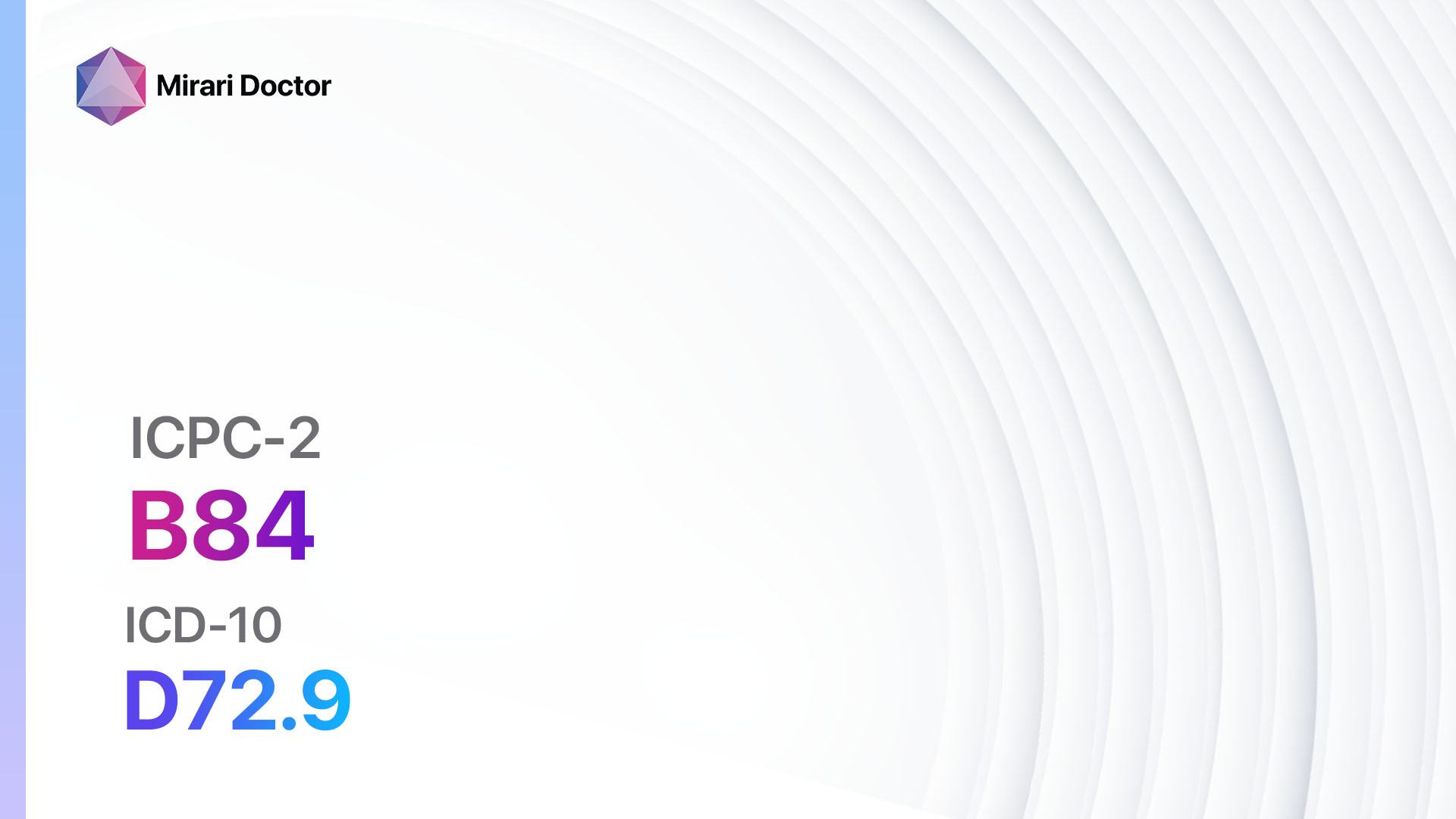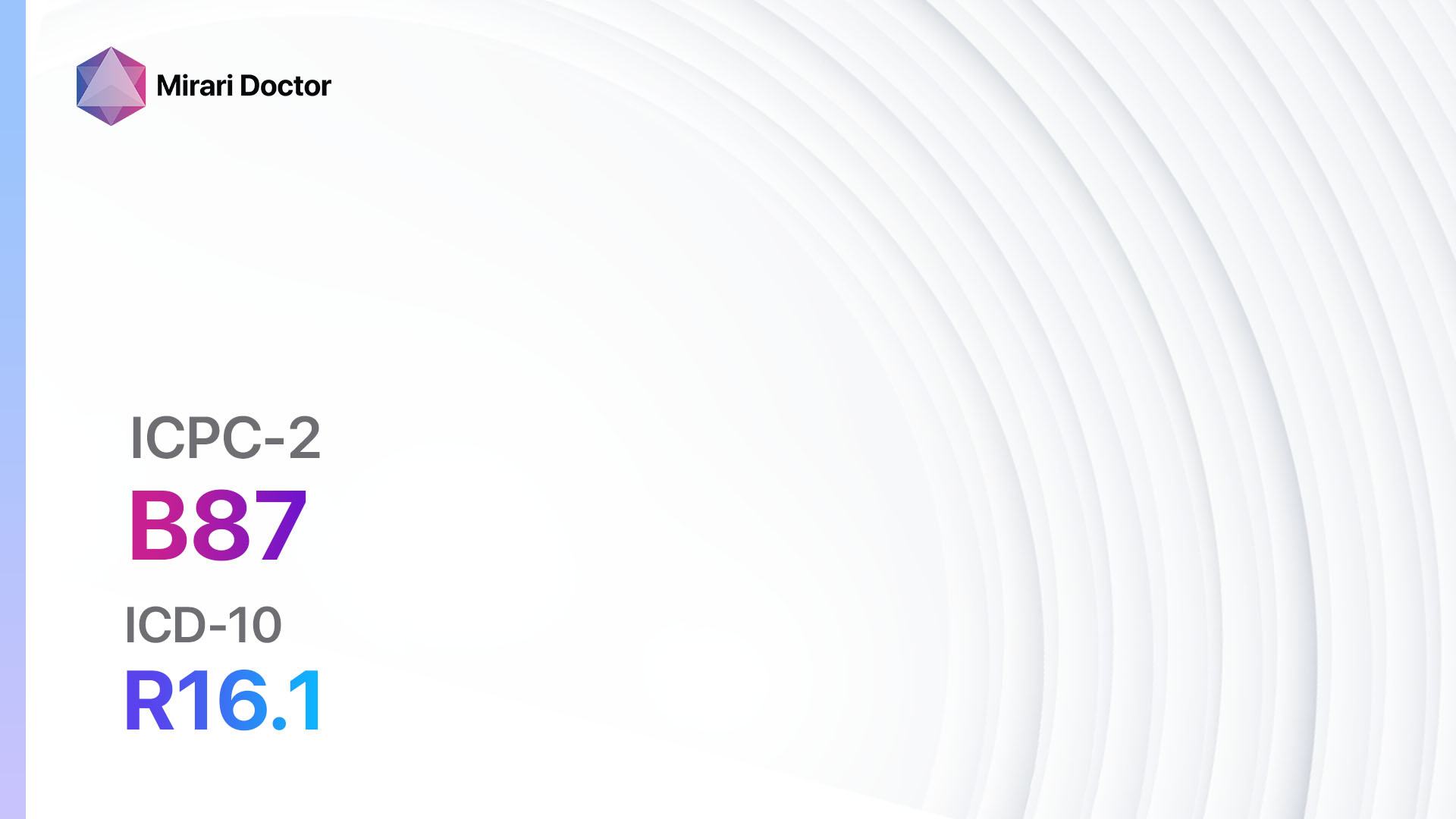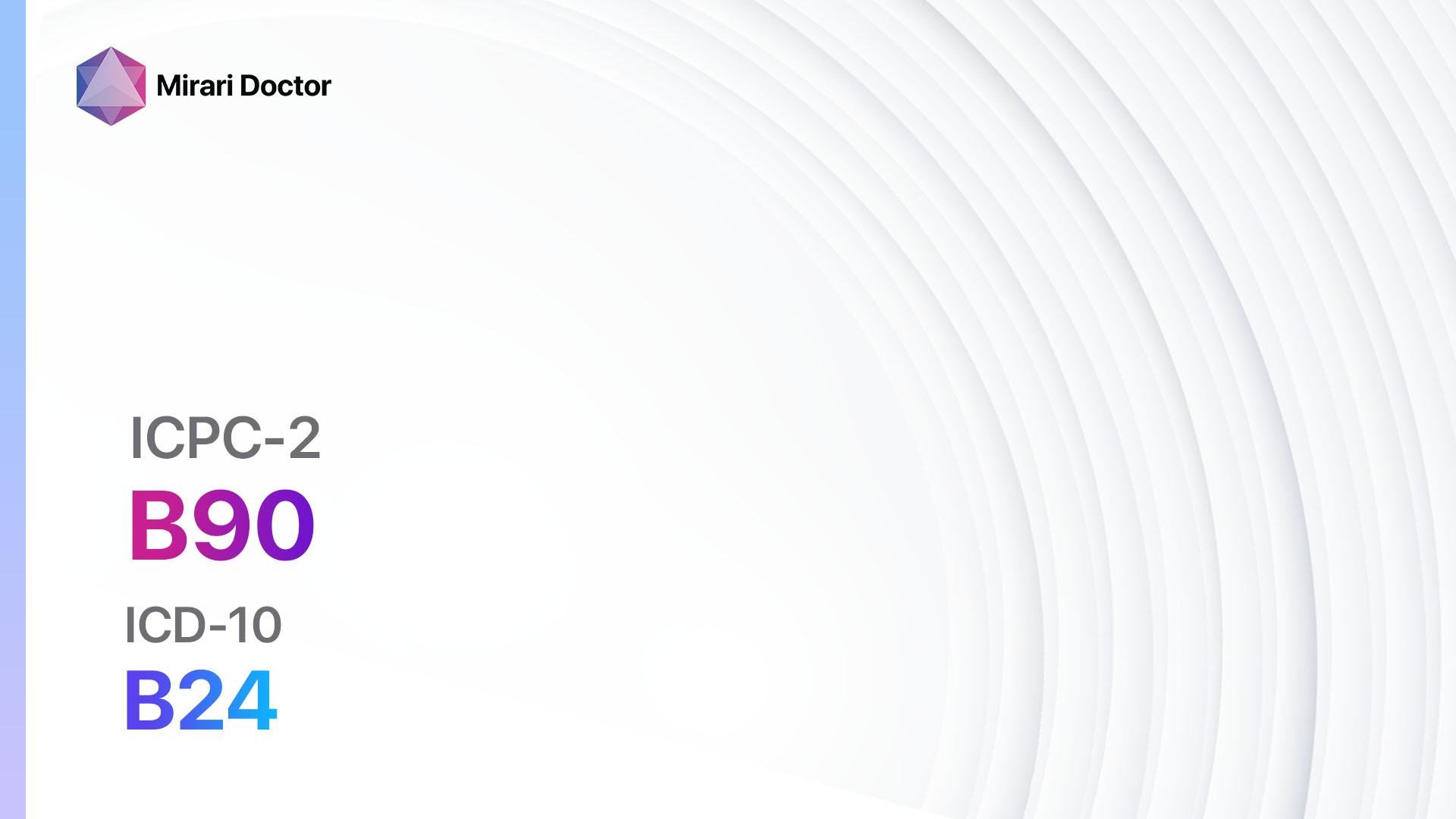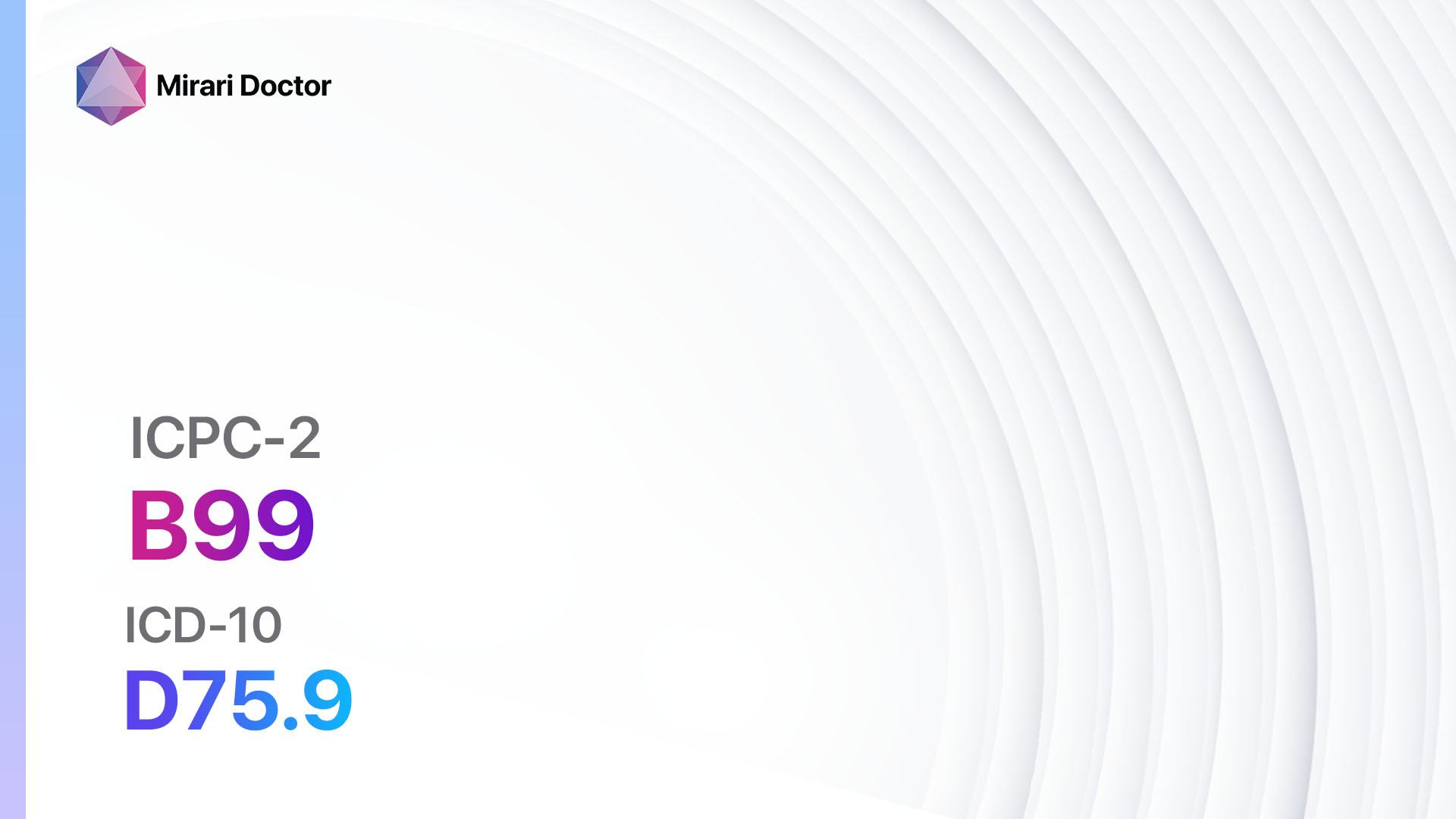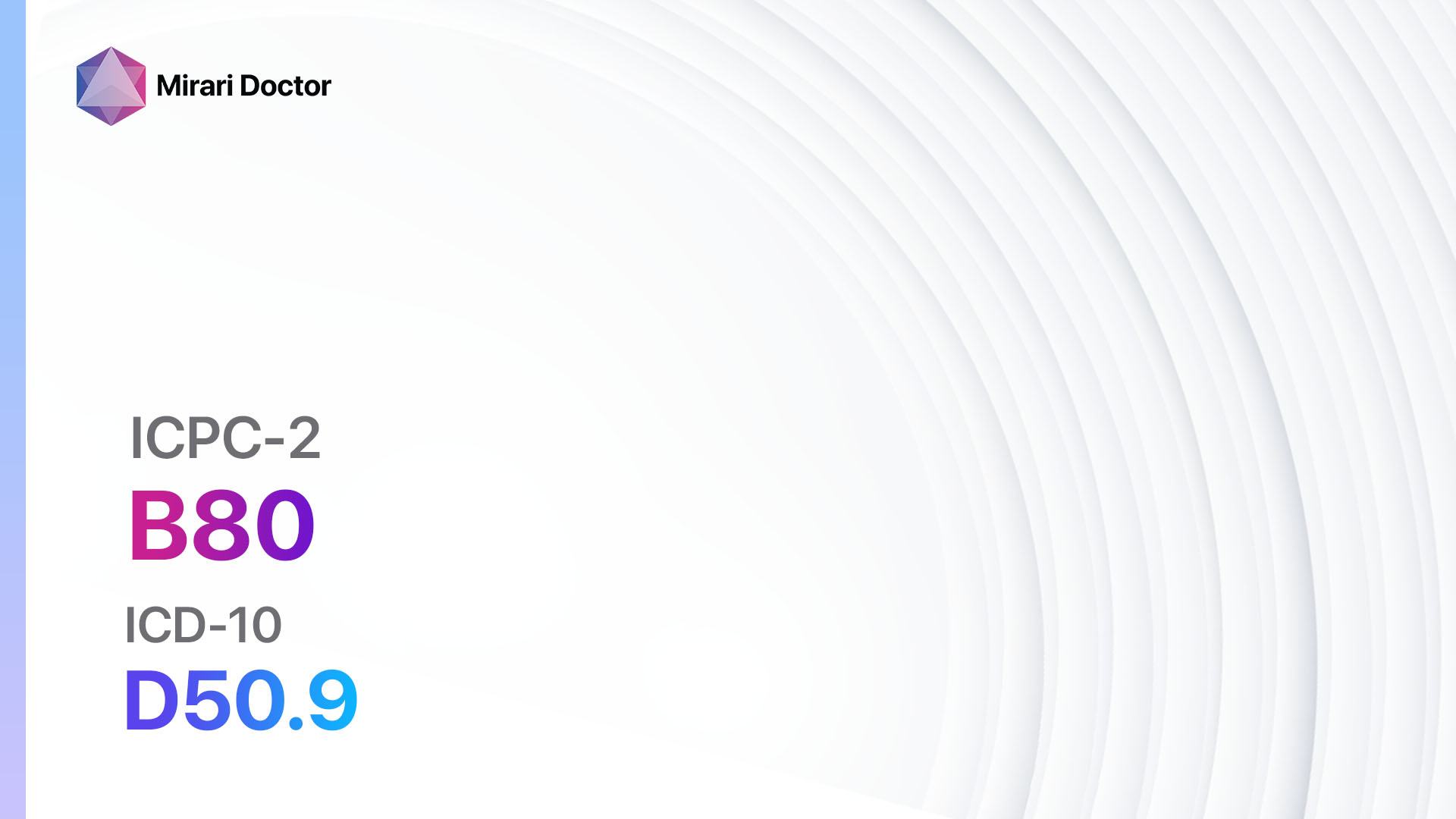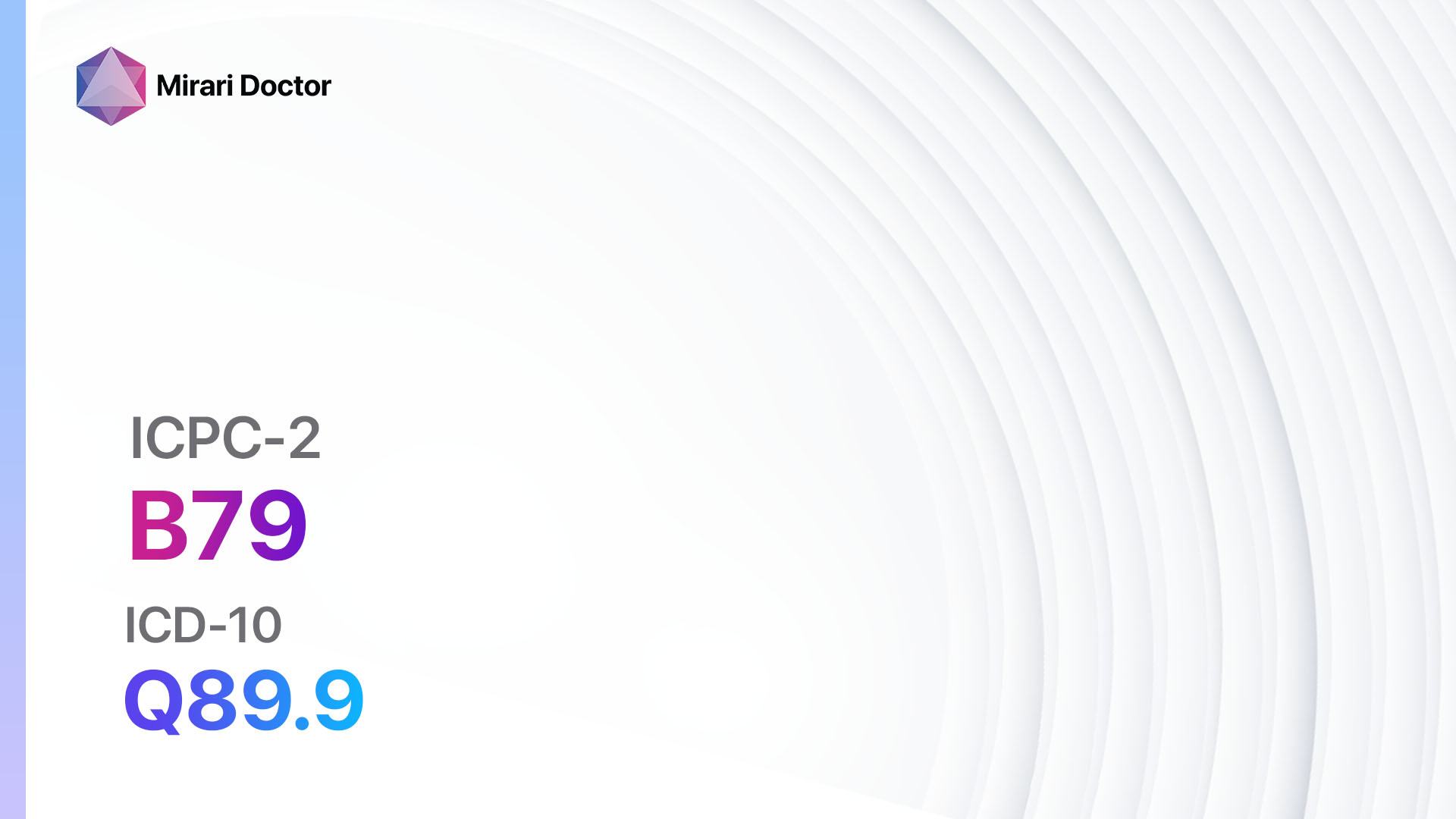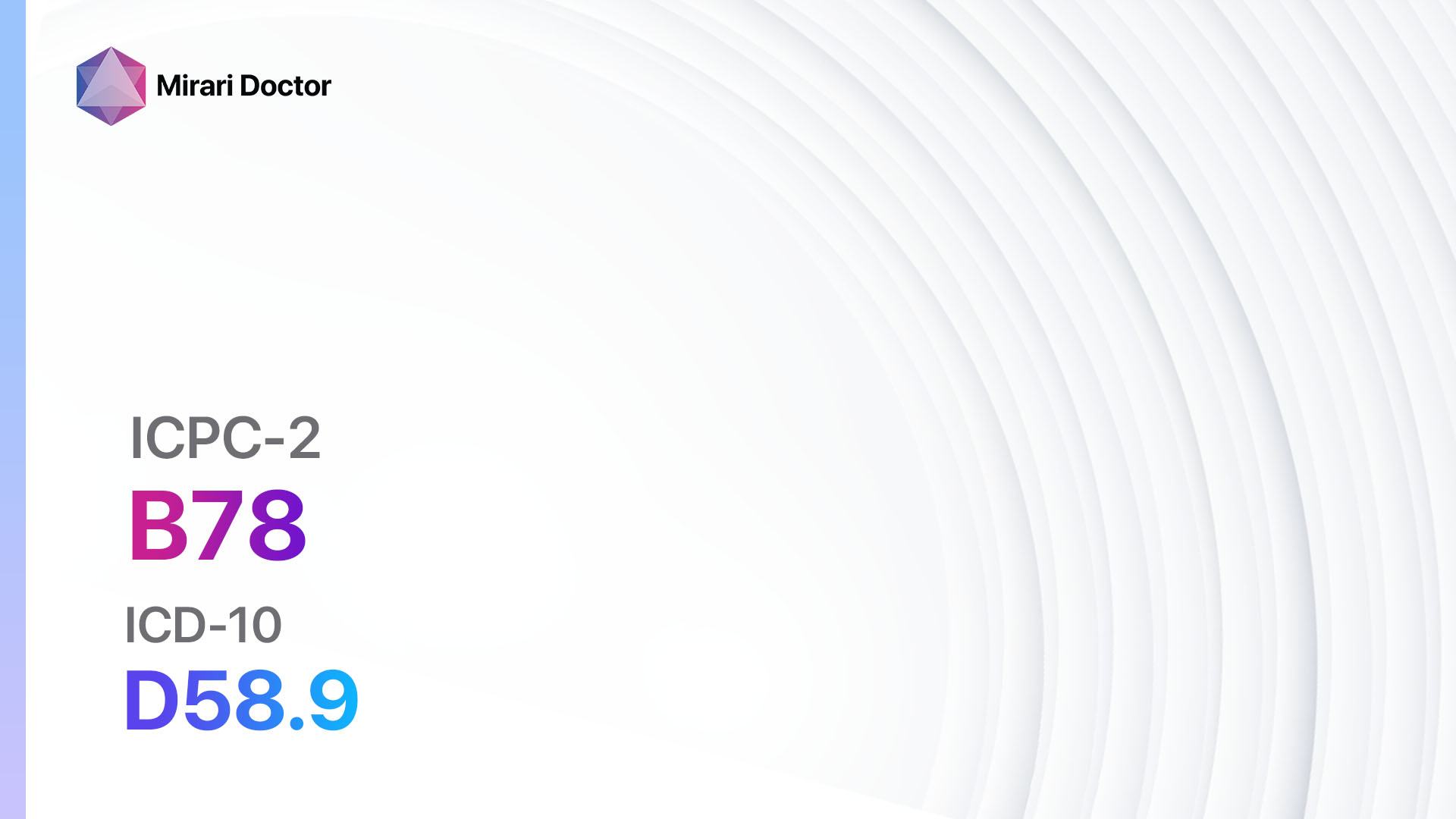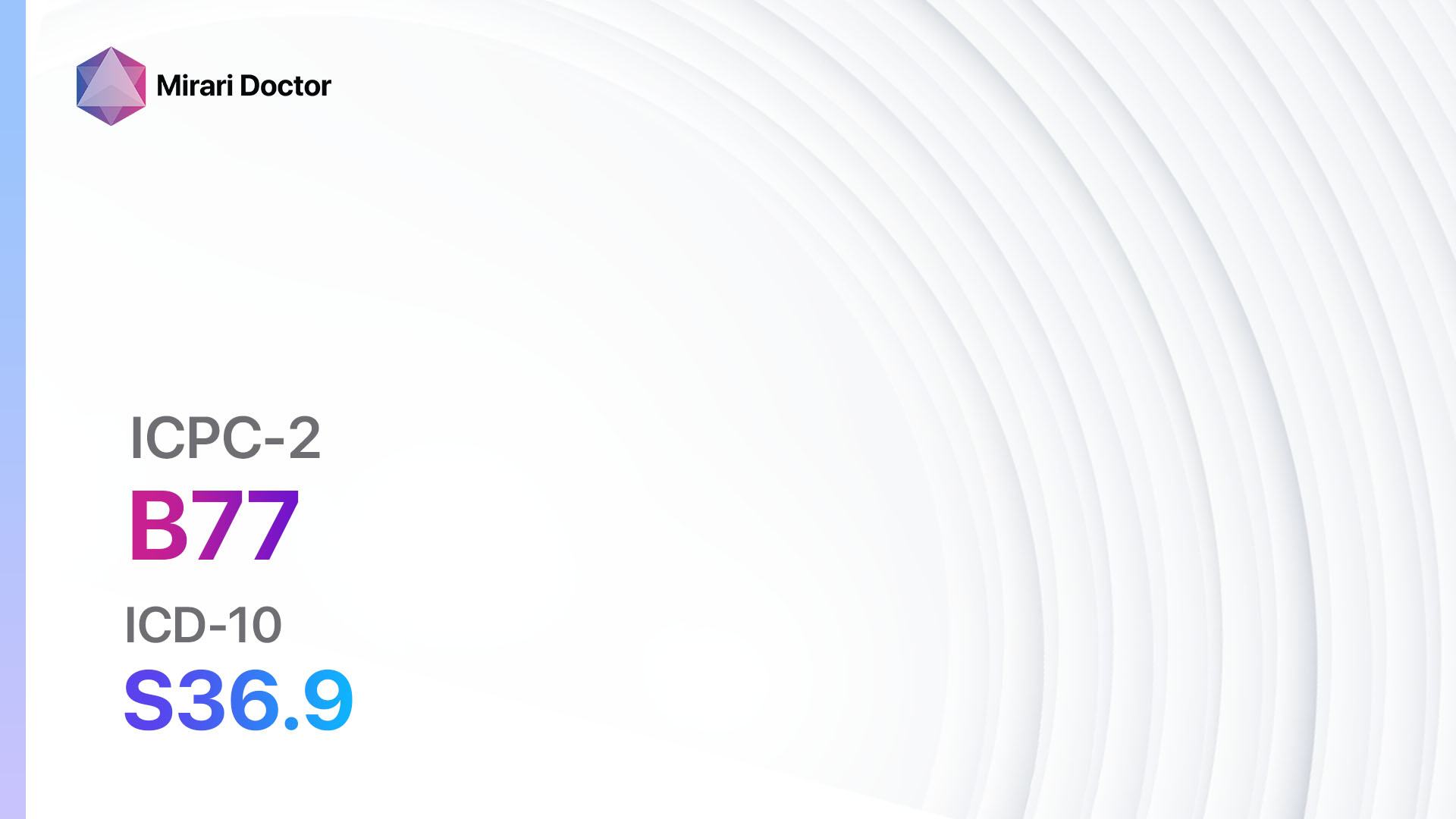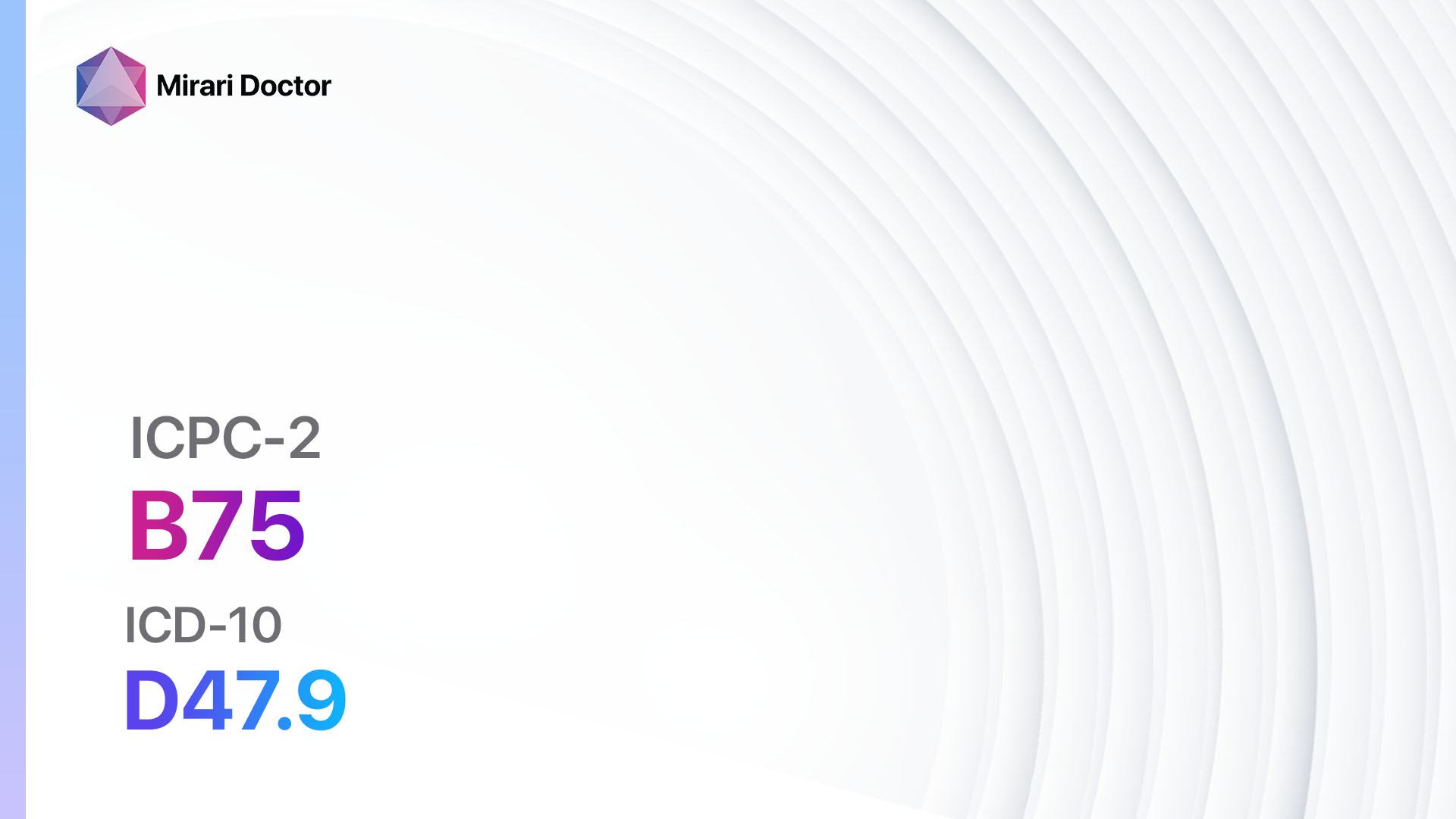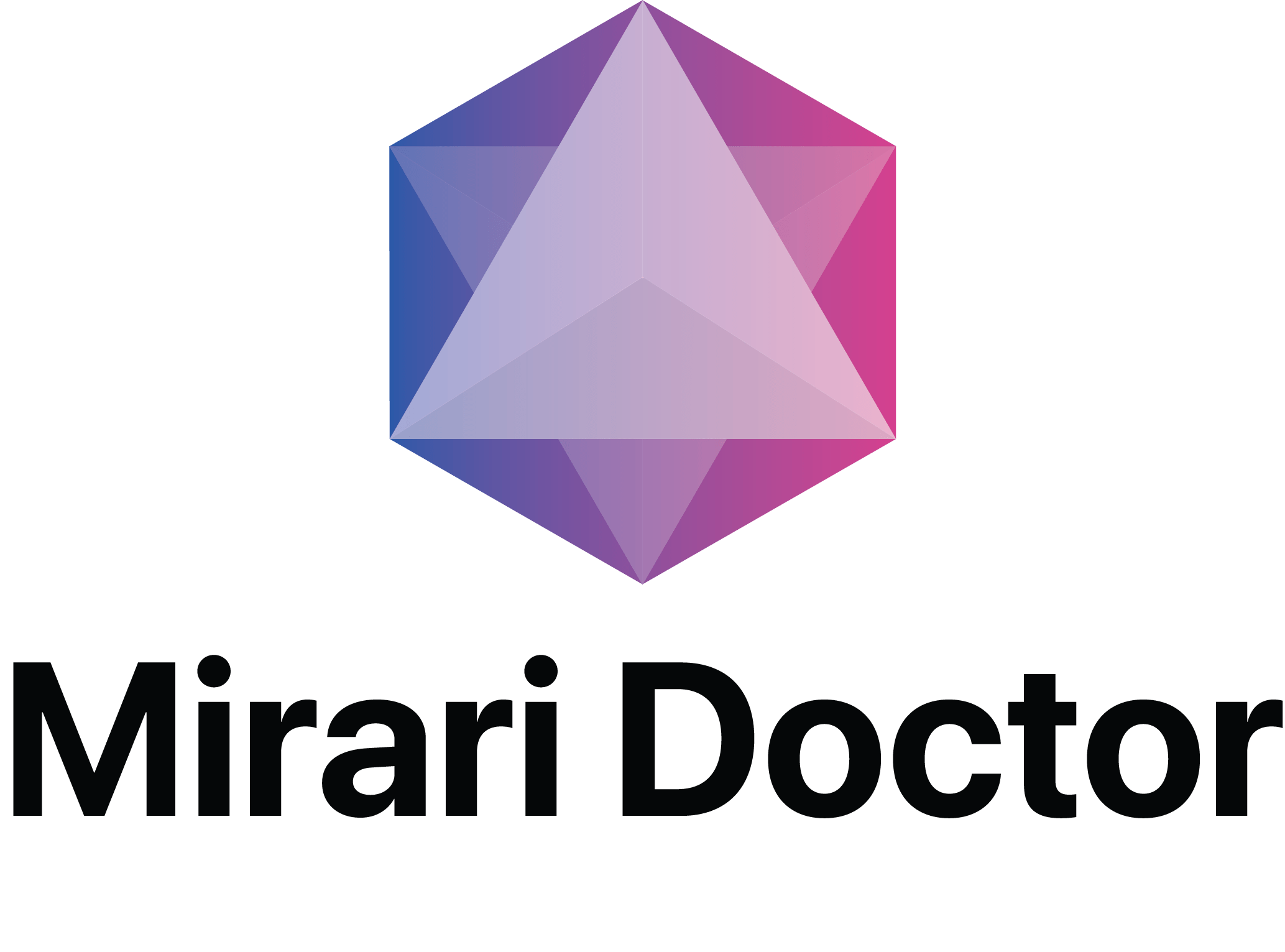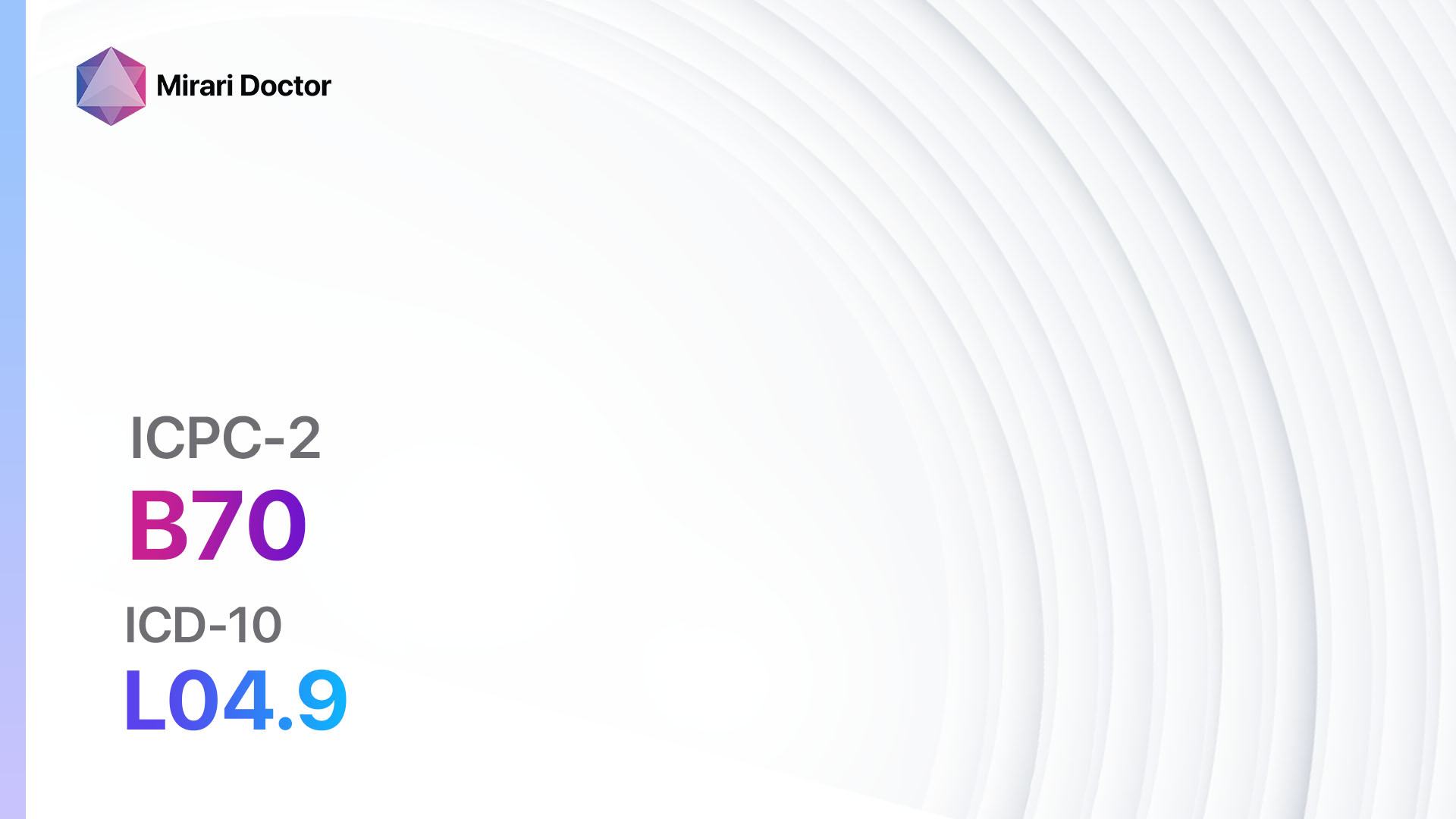
Introduction
Lymphadenitis acute, also known as acute lymphadenitis, is a condition characterized by the inflammation and enlargement of lymph nodes[1]. It is commonly caused by a bacterial infection, but can also be caused by viral or fungal infections[2]. The aim of this guide is to provide a comprehensive overview of the diagnosis and management of acute lymphadenitis.
Codes
Symptoms
- Swollen lymph nodes: The affected lymph nodes may be tender and painful to touch[1].
- Redness and warmth: The skin over the affected lymph nodes may appear red and feel warm[1].
- Fever: Patients may experience a low-grade fever[2].
- Fatigue: Some patients may experience fatigue or malaise[2].
- Abscess formation: In severe cases, an abscess may form within the affected lymph node[5].
Causes
- Bacterial infection: The most common cause of acute lymphadenitis is a bacterial infection, with Staphylococcus aureus and Streptococcus pyogenes accounting for 40-80% of cases[2].
- Viral infection: Viral infections, such as Epstein-Barr virus or cytomegalovirus, can also cause acute lymphadenitis[2].
- Fungal infection: Fungal infections, such as histoplasmosis or cryptococcosis, can rarely cause acute lymphadenitis[2].
- Cat scratch disease: Bartonella henselae, transmitted through cat scratches or bites, can cause acute lymphadenitis[2].
Diagnostic Steps
Medical History
- Gather information about the patient’s symptoms, including the duration and progression of lymph node enlargement
- Inquire about recent infections, such as upper respiratory tract infections or skin infections
- Ask about exposure to animals, particularly cats, as cat scratch disease can cause acute lymphadenitis
Physical Examination
- Palpate the affected lymph nodes to assess for tenderness, size, and consistency
- Examine the skin over the affected lymph nodes for redness, warmth, or signs of abscess formation
- Perform a thorough examination of other body systems to assess for signs of infection or underlying conditions
Laboratory Tests
- Complete blood count (CBC): Elevated white blood cell count may indicate an infection[1]
- Blood cultures: To identify the causative organism in cases of suspected bacterial infection[2]
- Fine-needle aspiration (FNA) biopsy: To obtain a sample of the affected lymph node for further analysis, including culture and sensitivity testing[6]
Diagnostic Imaging
- Ultrasound: Can be used to assess the size, shape, and internal characteristics of the affected lymph nodes[6]
- CT scan: May be performed if there is suspicion of abscess formation or to evaluate for underlying conditions[6]
Other Tests
- Serological testing: In cases of suspected viral or fungal infection, serological tests may be performed to identify specific antibodies or antigens[2]
- Biopsy: In some cases, a surgical biopsy may be necessary to obtain a larger tissue sample for analysis[6]
Follow-up and Patient Education
- Schedule follow-up appointments to monitor the progress of the condition and response to treatment
- Educate the patient about the importance of completing the full course of antibiotics if prescribed
- Provide information on self-care measures, such as warm compresses and over-the-counter pain relievers, to alleviate symptoms
Possible Interventions
Traditional Interventions
Medications:
Top 5 drugs for acute lymphadenitis:
- Antibiotics (e.g., Amoxicillin-clavulanate, Cephalexin):
- Cost: Generic versions can be $3-$50/month
- Contraindications: Allergy to penicillin or cephalosporins
- Side effects: Nausea, diarrhea, rash
- Severe side effects: Severe allergic reactions, Clostridium difficile infection
- Drug interactions: Warfarin, oral contraceptives
- Warning: Complete the full course of antibiotics as prescribed[5]
- Clindamycin:
- Cost: Generic versions can be $10-$50/month
- Contraindications: Allergy to clindamycin or lincomycin
- Side effects: Nausea, diarrhea, rash
- Severe side effects: Clostridium difficile infection, severe allergic reactions
- Drug interactions: Neuromuscular blocking agents
- Warning: Complete the full course as prescribed[5]
- Nonsteroidal anti-inflammatory drugs (NSAIDs) (e.g., Ibuprofen, Naproxen):
- Cost: Generic versions can be $5-$20/month
- Contraindications: Active peptic ulcer disease, history of gastrointestinal bleeding
- Side effects: Upset stomach, heartburn
- Severe side effects: Gastrointestinal bleeding, kidney problems
- Drug interactions: Aspirin, other NSAIDs
- Warning: Take with food to minimize stomach upset[7]
- Acetaminophen:
- Cost: Generic versions can be $3-$10/month
- Contraindications: Severe liver disease
- Side effects: None significant at therapeutic doses
- Severe side effects: Liver damage (with overdose)
- Drug interactions: Alcohol, other medications containing acetaminophen
- Warning: Do not exceed the recommended dose[7]
- Antiviral medications (e.g., Acyclovir, Valacyclovir):
- Cost: Generic versions can be $10-$50/month
- Contraindications: Hypersensitivity to acyclovir or valacyclovir
- Side effects: Nausea, headache
- Severe side effects: Acute kidney injury (rare), thrombotic thrombocytopenic purpura (rare)
- Drug interactions: Probenecid, nephrotoxic drugs
- Warning: Start antiviral treatment as early as possible for maximum effectiveness[2]
Alternative Drugs:
- Homeopathic remedies: Some individuals may find relief from acute lymphadenitis symptoms with homeopathic remedies. Cost: Varies depending on the specific remedy
- Herbal supplements: Certain herbs, such as Echinacea or goldenseal, may have immune-boosting properties. Cost: Varies depending on the specific supplement
- Probiotics: Probiotics may help support the immune system and promote overall health. Cost: Varies depending on the specific product
Surgical Interventions
- Incision and drainage: In cases of abscess formation, a surgical procedure may be necessary to drain the abscess and remove infected tissue. Cost: $500-$2,000[8]
- Excisional biopsy: If a biopsy reveals the presence of cancer or other serious conditions, a surgical excision may be required. Cost: $2,000-$10,000[6]
Lifestyle Interventions
- Rest and hydration: Adequate rest and hydration can help support the immune system and promote healing. Cost: None[1]
- Warm compresses: Applying warm compresses to the affected lymph nodes can help reduce pain and inflammation. Cost: None[8]
- Good hygiene practices: Encourage the patient to practice good hygiene, including regular handwashing, to prevent the spread of infection. Cost: None[1]
It is important to note that the cost ranges provided are approximate and may vary depending on the location and availability of the interventions.
Mirari Cold Plasma Alternative Intervention
Understanding Mirari Cold Plasma
- Safe and Non-Invasive Treatment: Mirari Cold Plasma is a safe and non-invasive treatment option for various skin conditions. It does not require incisions, minimizing the risk of scarring, bleeding, or tissue damage.
- Efficient Extraction of Foreign Bodies: Mirari Cold Plasma facilitates the removal of foreign bodies from the skin by degrading and dissociating organic matter, allowing easier access and extraction.
- Pain Reduction and Comfort: Mirari Cold Plasma has a local analgesic effect, providing pain relief during the treatment, making it more comfortable for the patient.
- Reduced Risk of Infection: Mirari Cold Plasma has antimicrobial properties, effectively killing bacteria and reducing the risk of infection.
- Accelerated Healing and Minimal Scarring: Mirari Cold Plasma stimulates wound healing and tissue regeneration, reducing healing time and minimizing the formation of scars.
Mirari Cold Plasma Prescription
Video instructions for using Mirari Cold Plasma Device – B70 Lymphadenitis acute (ICD-10:L04.9)
| Mild | Moderate | Severe |
| Mode setting: 1 (Infection) Location: 0 (Localized) Morning: 15 minutes, Evening: 15 minutes |
Mode setting: 1 (Infection) Location: 0 (Localized) Morning: 30 minutes, Lunch: 30 minutes, Evening: 30 minutes |
Mode setting: 1 (Infection) Location: 0 (Localized) Morning: 30 minutes, Lunch: 30 minutes, Evening: 30 minutes |
| Mode setting: 2 (Wound Healing) Location: 0 (Localized) Morning: 15 minutes, Evening: 15 minutes |
Mode setting: 2 (Wound Healing) Location: 0 (Localized) Morning: 30 minutes, Lunch: 30 minutes, Evening: 30 minutes |
Mode setting: 2 (Wound Healing) Location: 0 (Localized) Morning: 30 minutes, Lunch: 30 minutes, Evening: 30 minutes |
| Mode setting: 7 (Immunotherapy) Location: 7 (Neuro system & ENT) Morning: 15 minutes, Evening: 15 minutes |
Mode setting: 7 (Immunotherapy) Location: 7 (Neuro system & ENT) Morning: 30 minutes, Lunch: 30 minutes, Evening: 30 minutes |
Mode setting: 7 (Immunotherapy) Location: 7 (Neuro system & ENT) Morning: 30 minutes, Lunch: 30 minutes, Evening: 30 minutes |
| Mode setting: 7 (Immunotherapy) Location: 1 (Sacrum) Morning: 15 minutes, Evening: 15 minutes |
Mode setting: 7 (Immunotherapy) Location: 1 (Sacrum) Morning: 30 minutes, Lunch: 30 minutes, Evening: 30 minutes |
Mode setting: 7 (Immunotherapy) Location: 1 (Sacrum) Morning: 30 minutes, Lunch: 30 minutes, Evening: 30 minutes |
| Total Morning: 60 minutes approx. $10 USD, Evening: 60 minutes approx. $10 USD |
Total Morning: 120 minutes approx. $20 USD, Lunch: 120 minutes approx. $20 USD, Evening: 120 minutes approx. $20 USD, |
Total Morning: 120 minutes approx. $20 USD, Lunch: 120 minutes approx. $20 USD, Evening: 120 minutes approx. $20 USD, |
| Usual treatment for 7-60 days approx. $140 USD – $1200 USD | Usual treatment for 6-8 weeks approx. $2,520 USD – $3,360 USD |
Usual treatment for 3-6 months approx. $5,400 USD – $10,800 USD
|
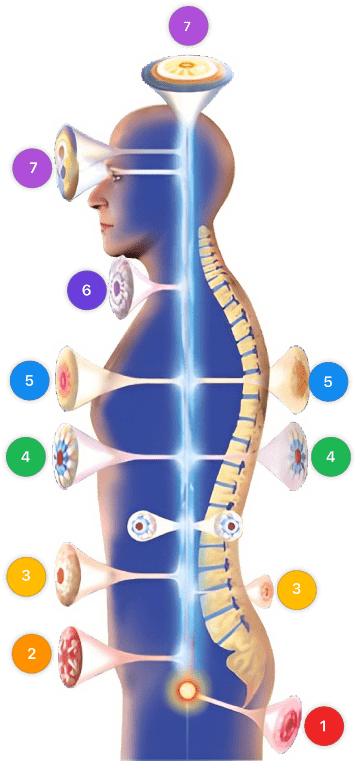 |
|
Use the Mirari Cold Plasma device to treat Lymphadenitis acute effectively.
WARNING: MIRARI COLD PLASMA IS DESIGNED FOR THE HUMAN BODY WITHOUT ANY ARTIFICIAL OR THIRD PARTY PRODUCTS. USE OF OTHER PRODUCTS IN COMBINATION WITH MIRARI COLD PLASMA MAY CAUSE UNPREDICTABLE EFFECTS, HARM OR INJURY. PLEASE CONSULT A MEDICAL PROFESSIONAL BEFORE COMBINING ANY OTHER PRODUCTS WITH USE OF MIRARI.
Step 1: Cleanse the Skin
- Start by cleaning the affected area of the skin with a gentle cleanser or mild soap and water. Gently pat the area dry with a clean towel.
Step 2: Prepare the Mirari Cold Plasma device
- Ensure that the Mirari Cold Plasma device is fully charged or has fresh batteries as per the manufacturer’s instructions. Make sure the device is clean and in good working condition.
- Switch on the Mirari device using the power button or by following the specific instructions provided with the device.
- Some Mirari devices may have adjustable settings for intensity or treatment duration. Follow the manufacturer’s instructions to select the appropriate settings based on your needs and the recommended guidelines.
Step 3: Apply the Device
- Place the Mirari device in direct contact with the affected area of the skin. Gently glide or hold the device over the skin surface, ensuring even coverage of the area experiencing.
- Slowly move the Mirari device in a circular motion or follow a specific pattern as indicated in the user manual. This helps ensure thorough treatment coverage.
Step 4: Monitor and Assess:
- Keep track of your progress and evaluate the effectiveness of the Mirari device in managing your Lymphadenitis acute. If you have any concerns or notice any adverse reactions, consult with your health care professional.
Note
This guide is for informational purposes only and should not replace the advice of a medical professional. Always consult with your healthcare provider or a qualified medical professional for personal advice, diagnosis, or treatment. Do not solely rely on the information presented here for decisions about your health. Use of this information is at your own risk. The authors of this guide, nor any associated entities or platforms, are not responsible for any potential adverse effects or outcomes based on the content.
Mirari Cold Plasma System Disclaimer
- Purpose: The Mirari Cold Plasma System is a Class 2 medical device designed for use by trained healthcare professionals. It is registered for use in Thailand and Vietnam. It is not intended for use outside of these locations.
- Informational Use: The content and information provided with the device are for educational and informational purposes only. They are not a substitute for professional medical advice or care.
- Variable Outcomes: While the device is approved for specific uses, individual outcomes can differ. We do not assert or guarantee specific medical outcomes.
- Consultation: Prior to utilizing the device or making decisions based on its content, it is essential to consult with a Certified Mirari Tele-Therapist and your medical healthcare provider regarding specific protocols.
- Liability: By using this device, users are acknowledging and accepting all potential risks. Neither the manufacturer nor the distributor will be held accountable for any adverse reactions, injuries, or damages stemming from its use.
- Geographical Availability: This device has received approval for designated purposes by the Thai and Vietnam FDA. As of now, outside of Thailand and Vietnam, the Mirari Cold Plasma System is not available for purchase or use.
References
- MedEntic. (2024). ICD-10 – L04: Acute lymphadenitis. https://www.medentic.app/en/resources/icd-codes/l04
- Gosche JR, et al. (2007). Acute, subacute, and chronic cervical lymphadenitis in children. Seminars in Pediatric Surgery. PMC7111159. https://pmc.ncbi.nlm.nih.gov/articles/PMC7111159/
- General Health System. (2025). ICPC-2 – English Classification. https://www.gesy.org.cy/el-gr/annualreport/icpc-2-english1-10.pdf
- AAPC. (2023). ICD-10-CM Code for Acute lymphadenitis, unspecified L04.9. https://www.aapc.com/codes/icd-10-codes/L04.9
- Howard-Jones AR, et al. (2023). Acute bacterial lymphadenitis in children: a retrospective cross-sectional study. Pediatric Infectious Disease Journal. PMC10175353. https://pmc.ncbi.nlm.nih.gov/articles/PMC10175353/
- Thompson JA, et al. (2023). Ultrasound versus fine needle aspiration for the initial evaluation of cervical lymphadenopathy in children. International Journal of Pediatric Otorhinolaryngology. https://www.sciencedirect.com/science/article/abs/pii/S0165587623000514
- Msolli MA, et al. (2021). Acetaminophen, Nonsteroidal Anti-inflammatory Drugs, or Combination in Acute Posttrauma Pain. Academic Emergency Medicine. PMID: 33145862. https://pubmed.ncbi.nlm.nih.gov/33145862/
- MSD Manual Professional Edition. (2023). Lymphadenitis – Dermatologic Disorders. https://www.msdmanuals.com/professional/dermatologic-disorders/bacterial-skin-infections/lymphadenitis
Related articles
Made in USA
